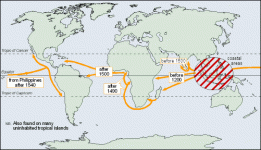Dave Rishar
Silver Member
As someone who grew up with the stories surrounding Oak Island, from multiple sources by the way, and as someone who knows a great deal about the history of this province, I'm quite comfortable determining for myself what is "screwed up" regarding Oak Island's narrative, as I'm sure new posters can do for themselves as well.
In other words, you're not the person that I was addressing. I was addressing the people that are coming here with no knowledge other than what they got from the TV - not the whole story, to put it kindly. To put it unkindly, it's the people like me that grew up with horse apples presented as fact. I grew out of it. Many do not. I remind them to check both sides of the story. (Stories, in this case.) Given that people generally form their beliefs before they have all of the facts and then rationalize the problems later, I'm probably wasting my time, but whatever. It's a hobby. A hobby is seldom wasted time.
Fresh Water has a density of 1.00 Kg/1, adding Fresh Water to the Sea Water in the Shaft would Dilute the Water Density in the Shaft, thus lowering this temporary Patch down on top of the Rupture.
Just so I'm understanding this correctly, you're arguing for a waterproof patch made of tar and coconut fibers that allows salt water on one side and fresh water on the other side to exchange sodium ions in a timely manner? If I misunderstood, please clear this up for me.
Are you sure that this wasn't a typo? I'm trying to give you the benefit of the doubt here. I admire humility. I do not admire insanity.
I believe that Coir Fiber was not produced in the Atlantic area during the late 17th Century, it was though traded for from the Indonesia areas during this time.
What is that belief based on?





